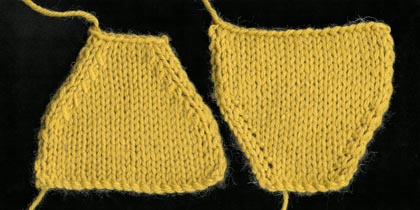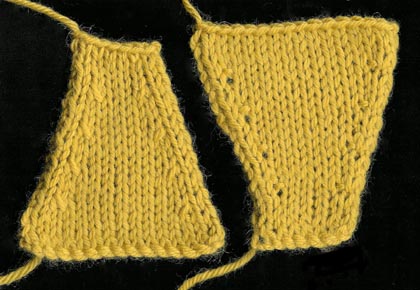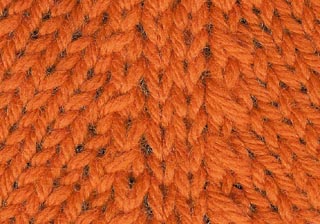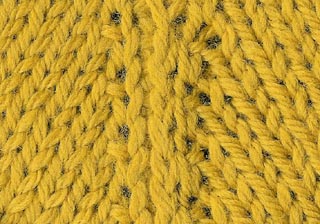11: Shaping
(cont.)
The solution is to work shapings, either increases or decreases,
one or two stitches in from any edge. You will have exactly the same
shape, but the difference is that the edges will be smooth instead
of bumpy and there will be a clear line of stitches at the edge. Any
seams can be worked close to the edge of the knitting and when
adding another piece, such as a sleeve or picking up stitches for
bands, the placement of stitches is easy [pic 4, 5].

4: Increasing or decreasing worked a number of stitches in
from any edge will result in a smooth edge. These samples have been
shaped on every knit row.

5: The shaping on these two pieces, increasing or
decreasing, has been worked on every fourth row.
Even if a garment is worked in a pattern
stitch, this way of shaping is often possible.
Any increases or decreases worked a few
stitches in from an edge will not disappear into the seam, so the
shaping will be clearly visible and should look good. Ugly or messy
shaping will spoil the effect of a beautifully knitted garment.
Shaping stitches show up as little bars, holes or sloped stitches,
and, because they can be clearly seen, they should match, balance or
pair wherever they are on the garment [pic 6,7].

6: Decreases matching on each side of
a seam. Sloping decrease stitches should point to each other when
the seam is joined.

7: Increases matching on each side of a seam.
NEXT
PAGE >> chapter
page: 1 | 2 |
3 | 4 | 5
| 6
|